Conceptual data model
ECLASS is a cross-industry master-data business standard for products and services information to be exchanged in a computer-sensible form across all borders – across sectors, countries, languages and organizations. The ECLASS data dictionary is based on ISO 13584-42 and IEC 61360-2. It is used for the exchange of product data for procurement, eCommerce, engineering tools, etc.
The information model used by ECLASS is the foundation of its classification and the structuration of the product descriptions. It also allows the reuse of generic descriptions in multiple business domains, the mapping to other dictionaries and ensure the upgradability of the ECLASS dictionary across its successive versions called releases.
This document is describing an abstract form of the ECLASS information model. It is helpful for understanding its logical structure and the relations between its elements.
The document is intended to become the backbone in the ECLASS technical support for common terminology and model structure.
It is intended to expert groups members for developing product data models and to IT experts for implementing the use of ECLASS dictionary in their information system.
Scope
This document defines the data model concepts of the ECLASS dictionary, its Structure Elements and their relations.
The concepts defined in this current version are used in ECLASS 11.x and further releases.
Out of scope:
- Business transaction of business objects
- Mappings (between releases)
- Mappings (between standards)
- Change Management Rules
- File format serializations (CSV, XML, …)
- Future developments (e.g. Qualifier, Relations)
- ISO / IEC related mappings and comparisons
- Security, confidentiality and access right management
Normative references
IEC 61360-2:2012, Standard data element types with associated classification scheme for electric components – Part 2: EXPRESS dictionary schema
ISO 639-1:2002, Codes for the representation of names of languages — Part 1: Alpha-2 code
ISO 639-2:1998, Codes for the representation of names of languages — Part 2: Alpha-3 code
ISO 6523-1:1998, Information technology — Structure for the identification of organizations and organization parts — Part 1: Identification of organization identification schemes
ISO 8601-1:2019, Date and time — Representations for information interchange — Part 1: Basic rules
ISO 10303-42:2019, Industrial automation systems and integration — Product data repre-sentation and exchange — Part 42: Integrated generic resource: Geometric and topological representation
ISO 13584-42:2010, Industrial automation systems and integration – Parts library – Part 42: Description methodology: Methodology for structuring part families
ISO TS 29002-5:2009, Industrial automation systems and integration — Exchange of characteristic data — Part 5: Identification scheme
ISO/IEC 11179-6:2015, Information technology — Metadata registries (MDR) — Part 6: Registration
Terms and definitions
General terms
The purpose of this section is not to provide extensive terms and definition but to ensure that there is consistent understanding on the approaches and terms used in this document.
Conceptual Data Model - Conceptual Model
Data model that represents an abstract view of the real world.
[SOURCE: ISO/IEC 11179 1:2015, 3.2.5]
Note: A Conceptual Data Model is the most abstract form of information model. It is helpful for communicating ideas to a wide range of stakeholders because of its simplicity. Therefore platform-specific information, such as Data Types, indexes and keys, is omitted from a Conceptual Information Model. Other implementation details, such as procedures and interface definitions, are also excluded.
Data Model
Graphical and/or lexical representation of data, specifying their Properties, Structure, and Interrelationships.
[SOURCE: ISO/IEC 11179 1:2015, 3.2.7]
Physical Model
A Physical Data Model visually represents the structure of data as implemented by for example a relational database schema.
Note: Providing a visual abstraction of the database structure, an important benefit of defining a Physical Data Model is that you can automatically derive the database schema from the model. This is possible due to the richness of meta-data captured by a Physical Data Model and its close mapping to Aspects of the database schema, such as database Tables, Columns, Primary keys and Foreign keys.
Serialization
A Serialization is a special case of a Physical Data which represents a series of data exchange structures.
Note: A serialization may be represented e.g. by an XML Schema (XML-Exchange File), CSV File or JSON.
Abbreviations
IRDI International Registration Data Identifier.
ECLASS-Conceptual-Data-Model
Release and Representations
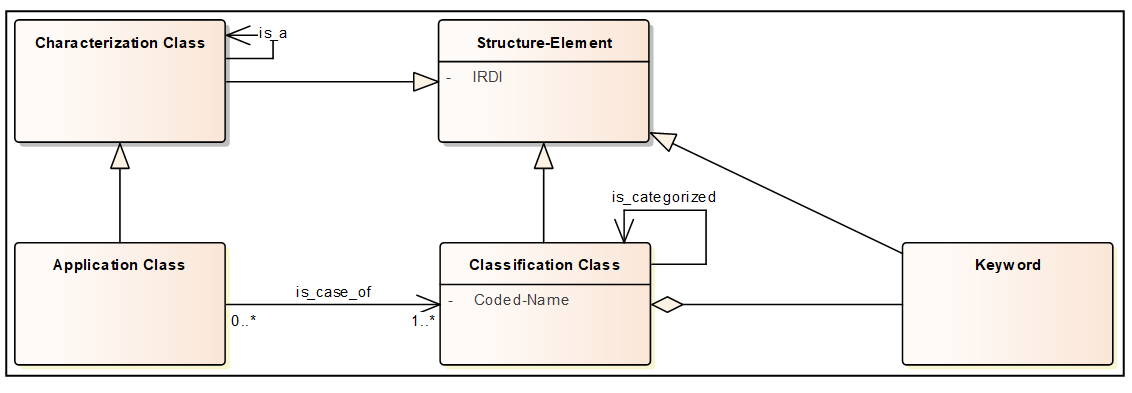
Figure 1: ECLASS Release and Representations
ECLASS is a formal semantic DICTIONARY which is used for product description and product classification. The ECLASS dictionary is maintained in RELEASE(S). Each release is containing an exhaustively defined and reproduceable set of STRUCTURE-ELEMENT(S). ECLASS separates Releases into MINOR-RELEASE and MAJOR-RELEASE, depending on business rules on the Releases’s content. Releases are delivered in different Representations, currently in BASIC-REPRESENTATION and ADVANCED-REPRESENTATION.
Structure-Element

Figure 2: Structure overview diagram
A STRUCTURE ELEMENT represents a semantic representation of a real world concept in the ECLASS DICTIONARY. The Structure-Element is uniquely identified by an IRDI. For human understanding each Structure-Element is described by translatable TERMINOLOGICAL INFORMATION.
ECLASS-Conceptual-Data-Model Overview
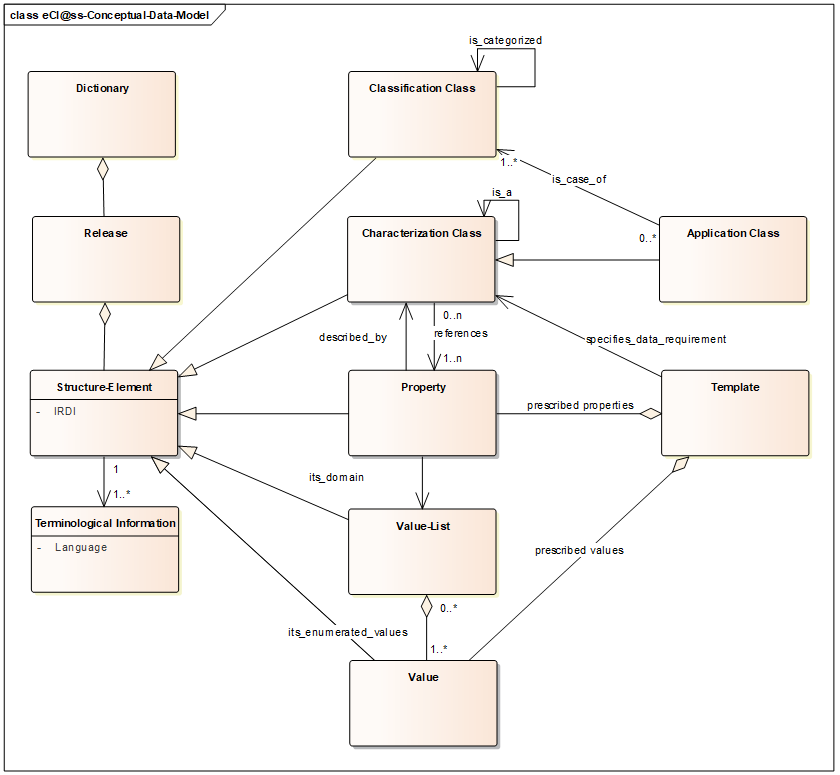
Figure 3: ECLASS-Conceptual-Data Model
ECLASS is a formal semantic DICTIONARY which is used for product description and product classification.
The ECLASS dictionary is maintained in RELEASE(S).
Each Release is containing an exhaustively defined and reproduceable set of STRUCTURE ELEMENT(S) each explained by TERMINOLOGICAL INFORMATION. Between releases apply formal dictionary Change Management Rules.
If a given concept represents a Class of products which may be described by the same set of PROPERTY(IES), this Class of products is a CHARACTERIZATION CLASS which is identified as an APPLICATION CLASS and categorized in a CLASSIFICATION CLASS.
The enumeration of all Values assigned to a Property is the Structure-Element VALUE-LIST.
A CHARACTERIZATION CLASS may have zero many TEMPLATE which are defining the formal data requirement specification (according to ISO 22745-30) of this Class.
Classification Class

Figure 4: ECLASS-Classification-Class
A CLASSIFICATION CLASS is a STRUCTURE ELEMENT, which helps to categorize the described product(s) are divided into certain categories of similar products. Classification-Classes are hierarchically ordered.
The hierarchy is a rooted, ordered tree with fixed height four. On the fourth level of the ECLASS classification hierarchy, each Classification-Class has two APPLICATION CLASS(ES) assigned. One of the BASIC-REPRESENTATION and one of the ADVANCED-REPRESENTATION. Each Classification Class may have zero to n untranslated KEYWORD(S) assigned.
Characterization Classes
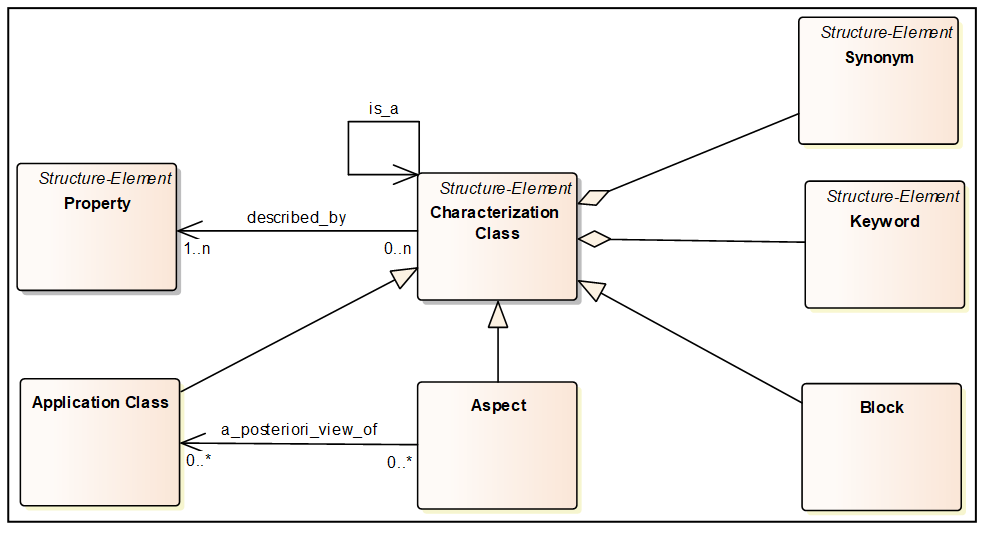
Figure 5: ECLASS-Characterization Classes
A Characterization Class is a STRUCTURE ELEMENT which is grouped hierarchically by the specialization relation (is_a). The specialization relation implies the substitution principle of the generic by the more special. Characterization Classes must have at least one Property assigned. A special case of Characterization Class is the APPLICATION CLASS, which is used for product description. It is mandatorily connected to the 4th level of the ECLASS Classification-Class hierarchy. Another case of Characterization Class is the ASPECT which is used for describing a special external perspective on an Application Class. A BLOCK is also a Characterization Class which is used for describing sub-concepts of an Application Class.
Note: Blocks are referenced by PROPERTY of DATA-TYPE Reference. Characterization Class may have zero to n KEYWORD and/or SYNONYM assigned.
Property
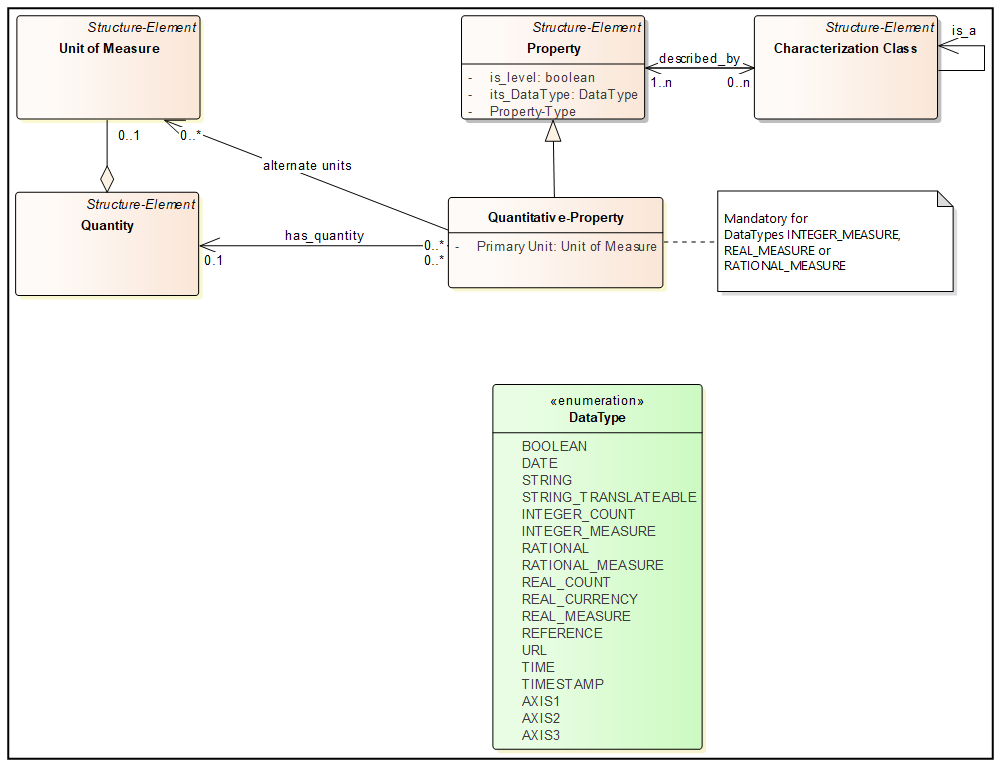
Figure 6: ECLASS-Conceptual-Data-Model-Property
A PROPERTY is a Structure-Element which represents a set of Values, either by the description of its Data-Type or by an relation to its VALUE(S) which determine the enumeration the most useful characteristics of the described item (e.g. Property: color, Value: red).
PROPERTY(IES) are used for describing the products which are instances of a CHARACTERIZATION CLASS.
Each Property has mandatory exactly one DATA TYPE assigned, which describes or enumerates the set of possible VALUE(S) in a VALUE-LIST .
QUANTITATIVE PROPERTY are Properties used to represent numeric Values, which are assigned to a UNIT OF MEASURE.
Properties are assigned to a QUANTITY, in order to allow conversion of Values referencing other UNIT OF MEASURE belonging to the same physical QUANTITY.
Depending Properties and Conditions
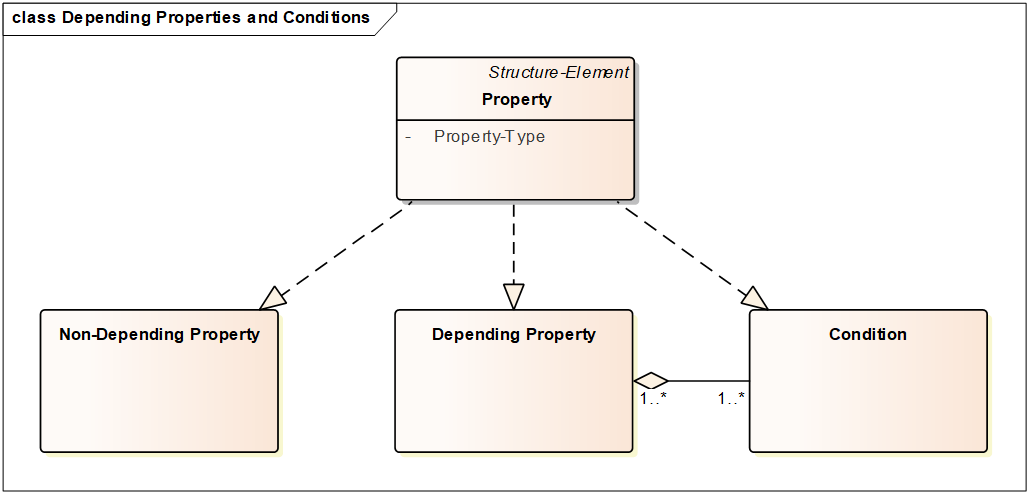
Figure 7: Depending Properties and Conditions
Properties may act in different ways, either the Property’s Value is not depending on any other Value, the PROPERTY is a NON-DEPENDING PROPERTY(IES). However, there are cases, where a Property‘s Value makes only sense if another Property’s Value is mandatory existing in a product. In this case the Property is a DEPENDING PROPERTY which depends on a non-empty-set of Properties, its CONDITIONS.
Value
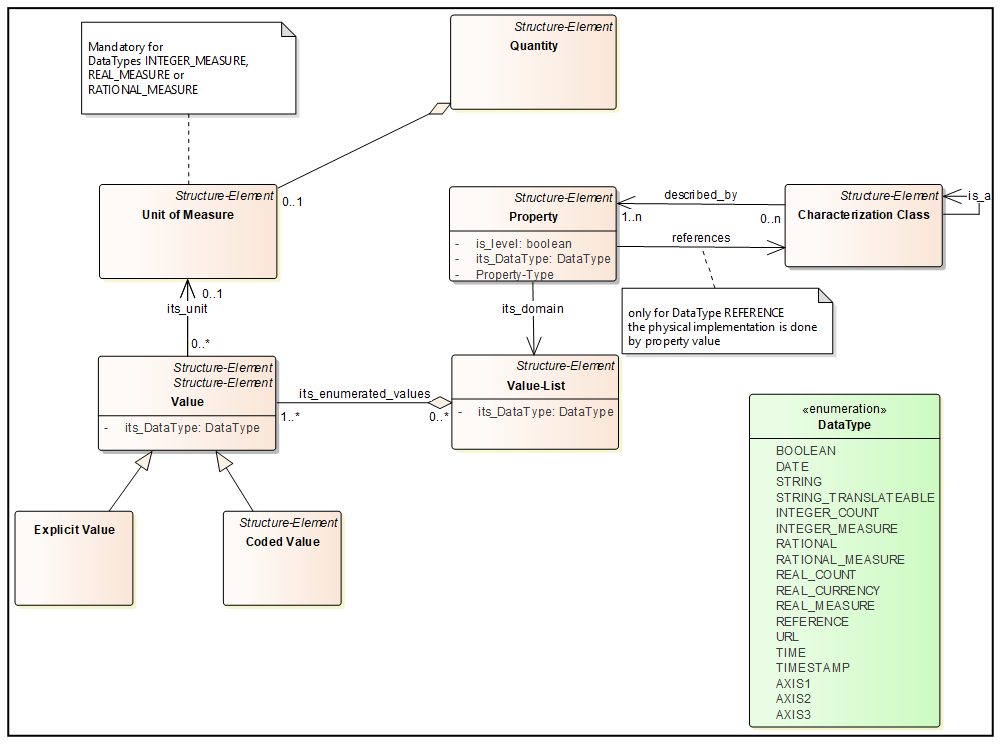
Figure 8: ECLASS-Conceptual-Data-Model-Values
VALUE(S) are enumerations within the DATA TYPE of a PROPERTY which restrict the set of possible Values for the Property.
Note: This enumeration of Values is referred to as VALUE-LIST.
Note: A Property does not necessarily have a VALUE-LIST assigned. However, a Property always has a mandatory DATA TYPE.
Values have a Data-Type which must match the Data-Type of the Property. Values may be subdivided into
- CODED VALUE which are Structure-Elements and can be looked up in the Dictionary and can be translated, and
- EXPLICIT VALUE which are commonly used concepts, like numbers (e.g. 10,25) which do not need look up in Dictionaries.
Values may have optionally a UNIT OF MEASURE assigned, provided the Value is intended for QUANTITATIVE-PROPERTY(IES).
For a Property of Data-Type REFERENCE the Values are references (i.e. IRDI) to CHARACTERIZATION-CLASS, what represents the set of instances which are abstracted by this Class.
Unit Measure
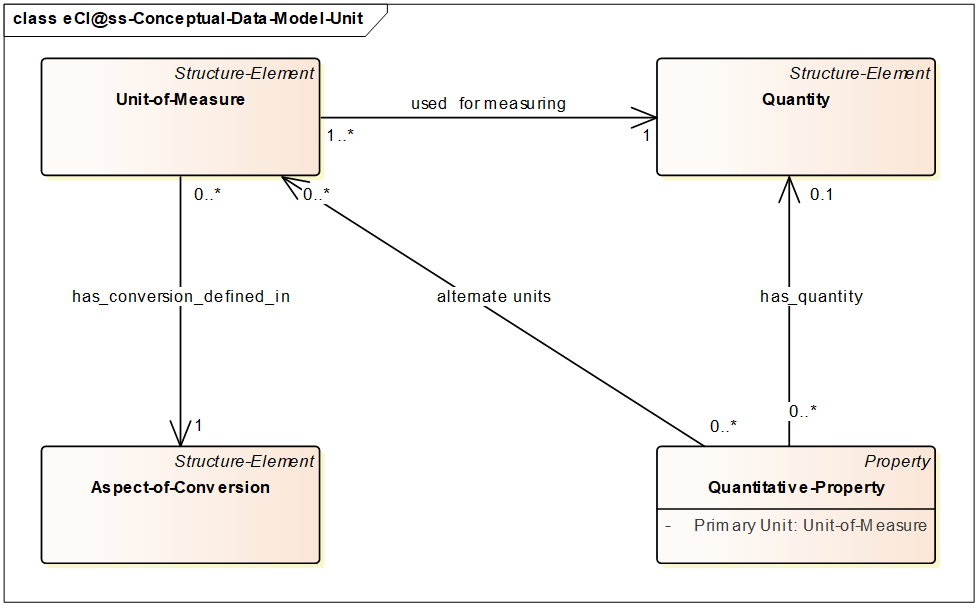
Figure 9: ECLASS-Conceptual-Data-Model-Unit
The Aspect of Conversion relates a Unit of Measure to the base Dimension of the underlying Unit system(s) in terms of exponents of the base Units. Each QUANTITATIVE-PROPERTY is assigned to a QUANTITY and a possible empty set of alternate Unit of Measure which must belong to the same QUANTITY.
The ASPECT OF CONVERSION defines the scales of composed Unit of Measure along the Unit system’s Dimensions.
Enumeration Constraint
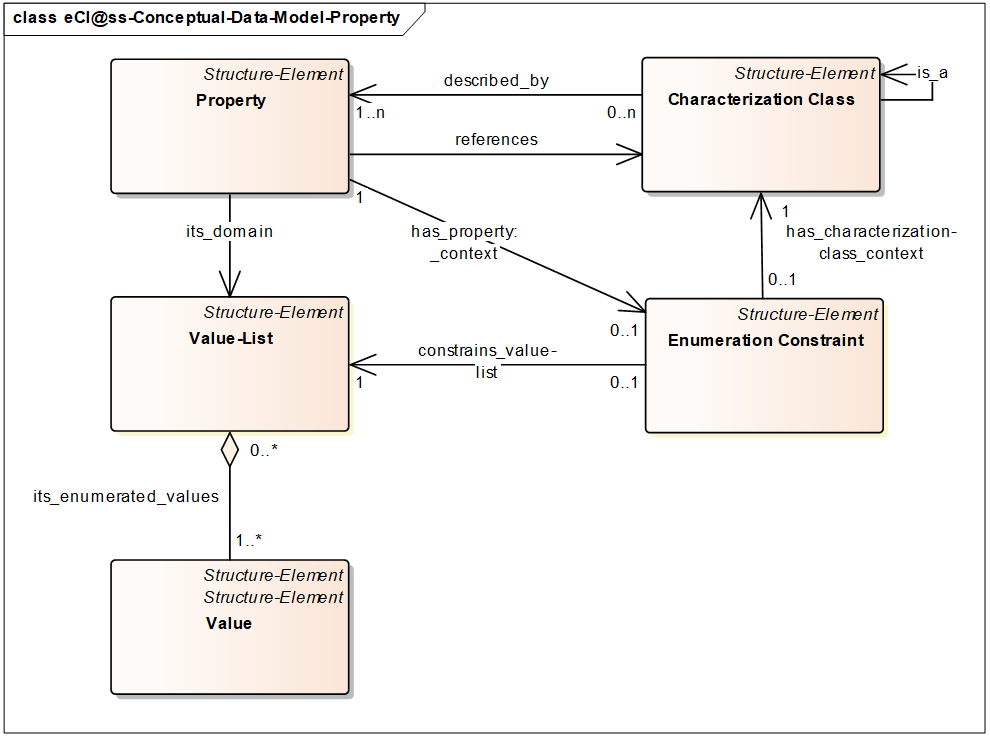
Figure 10: ECLASS-Conceptual-Model-Enumeration-Constrain
VALUE-LIST of a PROPERTY can be restricted by an ENUMERATION CONSTRAINT in context of a CHARACTERIZATION-CLASS, leading to less possible VALUE(S).
Structure elements
Advanced Representation
By introducing ECLASS 7.0 Advanced Representations, the ECLASS-Association offers an ISO13584 / IEC 61360 conformant data structure (compare Implementation Guide).
Application Class
An Application Class is a representation of a type or family of product (device, equipment, software or service) which can be described by a generic set of PROPERTY(IES)
Note: Property lists are compilations of individual features to describe individual commodities. In ECLASS, each subgroup (Classification Class at the fourth level) is described with the help of Properties. The properties are not directly assigned to a subgroup but to a so-called Application Class which is connected to a subgroup. In the versions before ECLASS 6.0, ECLASS has used sets of properties that were directly assigned to a Classification Class - as it is still shown in the BASIC version. Application Classes are only visible in the ADVANCED version.
See also: set of components of which each component can be described by the same group of data element types reference IEC 61360-1: 2002-02, 2.14
Aspect
Aspect is the approach, method of approach, point of view of a product or service or a part of a product or service
- in relation to a given situation,
- from a certain point, from a certain direction
- or at a certain angle
Note: An Aspect does not describe the product specific Properties itself (like Properties of Block and Application Class Properties), but it includes Properties for that Class under certain conditions or additional Properties for a Class under certain point of views.
Properties that describe the requirements for a device, are a typical Aspect of a device.
Example: The Aspect “Operating conditions” of a car. It describes under which conditions the car is to be operated: Central Europe, the Arctic or desert. The resulting Properties, however, such as minimum starting temperature or operational altitude are Properties of the “car” Class and Aspect elements!
Aspect of Conversion
An Aspect of Conversion relates a UNIT OF MEASURE to the base of the underlying Unit system(s) in terms of exponents of the base Units.
Basic Representation
ECLASS Basic Representation presents a version variant with all essential new contents in the usual format. Consequently, the Basic version is downloadable in a CSV and an XML serialization (compare Implementation Guide).
Block
A Block is a subset of properties within an Application-Class describing an abstraction of a feature of the product or of a part of a composite device
Note: If all Properties of a device type are arranged with equal importance on one single level, the list will become less understandable while more properties are added. Clarity can be achieved by structuring the Properties into sub-concepts, which are described by Properties. These sub-concepts are called Block (of Properties).
Every Block of Properties has a name and definition as defined in IEC 61360 Part 2 ed1 / ISO13584-42 ed1 for Properties. Blocks are structured in a similar way to Properties.
A Block - in contrary to the related concept of an Aspect - describes characteristics of the product itself.
A Block of Properties consists of one or more Properties describing an abstraction of a feature of an object or of a part of a composite device. A Block of properties may contain other Blocks of Properties nested to the necessary level as dictated by the technical requirements. At the lowest level, a Block will contain only Properties.
Classification-Class
Classification Class(es) divide products into certain categories of similar product(s), the product-groups.
Every Classification Class has the following main attributes
- a unique identifier IRDI,
- preferred name
- a coded name that represents the classification structure, e.g. 27-01-01-01
Note: ECLASS is a monohierarchical classification system, i.e. every product group is to be found only once in the hierarchical tree structure. With the development of ECLASS 7.1, the definition of a Classification Class was defined as a mandatory field, i.e. starting with ECLASS 7.1 every new Classification Class must have a definition. That does not imply that all Classification Classes that were created before 7.1 will have a definition as well.
Characterization-Class
Concept which represents a set of instance items (e.g. Products) which may be described by the same set of PROPERTY(IES).
Condition
PROPERTY which acts as condition for a DEPENDING PROPERTY.
Note: There are cases, where a Property‘s value makes only sense if another Property’s Value is mandatory existing. In this case the Property is a Depending Property which depends on a non-empty-set of Properties, its CONDITIONS.
Coded Value
VALUE represented by code and thus might be translated.
Note: A Value is a STRUCTURE ELEMENT
Note: a Coded-Value can be looked up in the DICTIONARY
Data Type
A Data Type defines what kind of information a Property or Value may transport.
List of Enumeration Values:
| Name | Explanation |
|---|---|
| BOOLEAN | Represents Boolean algebraic Values In serializations, the format (YES | NO) could be used. Example: Yes |
| DATE | Represents Values which are containing date. In serializations, the format yyyy-mm-dd according ISO 8601-1:2019 could be used Example: 1979-01-15 |
| STRING | A finite sequence of symbols that are chosen from a set or alphabet […] a sequence of characters (http://en.wikipedia.org/wiki/String_(computer_science)). Cannot be translated into other languages. Example: DN 700 ; 10 Mbps |
| STRING_TRANSLATABLE | A finite sequence of symbols that are chosen from a set or alphabet […] a sequence of characters (http://en.wikipedia.org/wiki/String_(computer_science)). Values for translatable string type Properties are required to each have an ISO 639-1 language assigned and may be further specialized by adding country identification. Examples: "red" (language: English) ; "grey" (language: English, country: United Kingdom) ; "Aluminum" (language: German). Note: ISO 639-2 defines a couple of exceptions that can be used in edge cases:
|
| INTEGER_COUNT | Data Type which represents some finite subset of the mathematical integers. These are also known as integral Data Types. Used only for counting. (http://en.wikipedia.org/wiki/Integer_(computer_science)). Example: 1 ; 10 ; 111 |
| INTEGER_MEASURE | Data Type which represents some finite subset of the mathematical integers. These are also known as integral Data Types. Used for measuring in a specific Unit of Measure. (http://en.wikipedia.org/wiki/Integer_(computer_science)). Example: 1 ; 10 ; 111 |
| RATIONAL | To represent rational numbers like 1/3 and -11/17 without rounding (http://en.wikipedia.org/wiki/Rational_data_type). Example: 1/3 ; 1 2/3 |
| RATIONAL_MEASURE | To represent rational numbers like 1/3 and -11/17 without rounding (http://en.wikipedia.org/wiki/Rational_data_type). Used for elements that are measures of type RATIONAL (i.e. expressed in a specific Unit of Measure) Example: 1/3 ; 1 2/3 |
| REAL_CURRENCY | A rational number expressed in decimal representation (http://en.wikipedia.org/wiki/Real_number). Used for measuring in a specific currency. Example: 1,5 ; 102,35 |
| REAL_MEASURE | A rational number expressed in decimal representation (http://en.wikipedia.org/wiki/Real_number). Used for measur-ing in a specific Unit of Measure. Example: 1,5 ; 102,35 |
| REFERENCE | Represents a reference to a Block or Application Class |
| URL | Represents Values according to ISO 13584-24:2003 |
| TIME | Represents Values which are containing time In serializations, the format hh:mm according ISO 8601-1:2019 could be used. Example: 12:45 |
| TIMESTAMP | Represents Values which are containing timestamp (i.e. date and time) In serializations, the format yyyy-mm-dd hh:mm according ISO 8601-1:2019 Example: 1979-01-15T12:45:00Z |
| AXIS1 | According to ISO 10303 axis1_placement is the direction and location in three-dimensional space of a single axis and is defined by a point (first three numbers) and an axis direction (last three numbers). |
| AXIS2 | According to ISO 10303 axis2_placement_2d is the location and orientation in two-dimensional space of two mutually perpendicular axes defined by a point (first two numbers) and an axis (last two numbers). |
| AXIS3 | According to ISO 10303 axis2_placement_3d is the location and orientation in three-dimensional space of two mutually perpendicular axes defined by a point (first three numbers) and two axes (middle and last three numbers). |
Depending Property
There are cases, where a Property’s Value make only sense if another Property’s Value is mandatory existing. In this case the Property is a DEPENDING PROPERTY which depends on a non-empty-set of Properties, its CONDITIONS.
Dictionary
Consistent ontological structure, composed by a set of Structure-Elements, which are checked for consistency, ECLASS rules and which are release managed together.
Note: The dictionary contains the classification and product description.
Enumeration Constraint
An Enumeration Constraint is assigned to the CHARACTERIZATION CLASS and enumerates the possible Values (within the Property's Value List) of a Property in context of this Characterization-Class.
Example: Property PRO123 has a Value List VLI123 that contains the Values [VAL001; VAL002, VAL003; VAL004]
By applying EC001 to Class CCL001 only the following Values are valid for PRO123: [VAL001; VAL002, VAL003]
By applying EC002 to Class CCL002 only the following Values are valid for PRO123: [VAL001; VAL002]
By applying EC003 to Class CCL003 only the following Value is valid for PRO123: [VAL004]
Note: The description of a suggested Value List including Constraints in the BASIC Release notes is as follows (update: Release 8.0): Value List - Constraint
Explicit Value
Explicit Value which are Values representing commonly used concepts, like numbers (e.g. 10,25) which do not need definition in dictionaries.
Keyword
Keywords aid the search for Classification Classes within the ECLASS Class structure. As only one name can be defined for a Classification Class, ECLASS offers the possibility, to assign more alternative names for a Class with the help of Keywords.
Example: The ECLASS 8.1 Class 23-11-01-04 "Hammer head bolt" has the Keyword "T-head bolt" as an alternative name for the same product group, so that users who speak of a "T-head bolt" can find the same Class that is officially named "Hammer head bolt". Keywords must not have the same meaning as the preferred name of the Classification Class (e.g. class: pliers, keyword: pipe pliers). Keywords must not match the preferred name of the Class they belong to. Keywords must not be too general in character (the keyword ‘school’ would be too vague for a Class named ‘ballpoint pen’). Keywords are preferably to be entered in singular form. Keywords cannot be translated 1:1 and therefore vary in the ECLASS language versions.
Major Release
An ECLASS Major Release is a Release type that includes all possible modifications of existing Structure Elements (including structural modifications) and the addition of new elements that:
- Include every kind of change including structural changes, e.g. structural changes of the Class hierarchy, changes of existing relations between structural elements, MOVEs, JOINs and SPLITs. For an overview please have a look at the list of valid Change Requests per Release.
- Are not downwards-compatible to previous releases due to possible structural changes.
- Cannot be integrated into a system as upgrade of the previous version automatically. This process is supported though not fully automated by available transaction update files and release update files. A manual re-mapping process of one's data might still be necessary.
- Are published every 2 to 4 years (see Release Roadmap).
- Are coded with the help of a Major Release Number and a zero Minor Release Number (X.0, e.g. 11.0 the next Major Release after 10.0.1).
Minor Release
An ECLASS MinorRelease was a Release type that included the modification of certain attributes of existing Structure Elements (e.g. textual changes) and the addition of new elements that:
- Include additions (possible on all hierarchical levels), the removal of erroneous Keywords and suggested Property Values and, if necessary, the correction of them. For an overview please have a look at the list of valid Change Requests per Release.
- Are downwards-compatible within the same Major Release Number (e.g. all 9.x Releases with each other, all 10.x Releases with each other etc).
- Can automatically be integrated into a system as an upgrade of the previous version as only version changes of existing structural elements and additions of new structural elements are made
- Are planned to be published once a year (see Release Roadmap).
- Are coded with the help of a Major Release Number and a Minor Release Number (n.X, e.g. 9.1 - the first Minor Release after Major Release 9.0).
Non-Depending Property
A Property of which the (instantiated) Value is not depending on any other Value.
See also: Depending-Property
International Registration Data Identifier (IRDI)
ECLASS uses globally unique identifiers for every object included in the ECLASS standard. It consists of several parts:
- an International Code Designator (ICD) according to ISO 6523-1, followed by an Organization Identifier (OI) that globally identifies ECLASS as the publishing organization (ECLASS: 0173, other registered organizations include ISO (0112), ODETTE (0177), SIEMENS (0175), GTIN (0160).
- a Code Space Identifier (CSI) that identifies the type of object (e.g. 01 for Classification Class, 02 for Property etc.).
Note: The International Registration Data Identifier is based on the international standards ISO/IEC 11179-6, ISO TS 29002-5 and ISO 6532.
See also: IRDI
Property
A Property describes a characteristic of a product.
Each Property has an associated Data Type.
If the Property has a numeric Data Type and is used for measuring, the Property must have a Unit of Measure.
Note: Every Property has a unique identifier (IRDI), a preferred name, a definition and a Value domain - among other attributes. An attribute of the Property is the attribute that defines, that the Property uses Property-Levels.
Property-Level
Property Levels define a Property and its levels out of min, max, typ, nom. The Values are a vector, which includes the minimal, maximal, typical and nominal Value (min, max, typ, nom) concurrently.
Note: Property-Level’s are sometimes referred as Level Type.
Quantity
A Quantity is a characteristic of an object that can be quantified by measurement. A Quantity can be expressed as the combination of Unit of Measure and a number, where the number is the magnitude.
Example: A length or mass are physical Quantities.
Quantitative-Property
Property with a numerical Value representing a physical Quantity.
Data Types INTEGER_MEASURE, REAL_MEASURE or RATIONAL_MEASURE are mandatory Quantitative-Property.
Each Quantitative-Property has exactly one Unit of Measure, its primary Unit, assigned.
Release
Release is the process of assigning either unique version numbers to unique states of ECLASS.
Within a given version number category (Major, Minor), these numbers are generally assigned in increasing order and correspond to new developments.
Release control is often used for keeping track of incrementally different versions of information.
Structure Element
ECLASS Business Objects are called Structure Elements.
ECLASS uses globally unique identifiers for every Structure Element included in the ECLASS standard.
This globally unique identifiers are called IRDI (International Registration Data Identifier).
The International Registration Data Identifier is based on the international standards ISO/IEC 11179-6, ISO TS 29002-5 and ISO 6532.
Note:
The IRDI contains of
- 0173-1 = ECLASS (as data supplier)
- Three letters followed by three numbers, e.g. AAA123
- Running number padded to length 3 with leading zeroes
Synonym
Synonyms are terms which have the same meaning as the preferred names of Structure Elements.
As a rule, Synonyms must not match the preferred name of the Structure Element.
Note: Before Release 7.0, Synonyms were managed as the Property attribute "alias name". Since Release 7.0 they are distinct structural elements.
Terminological Information
ECLASS is multilingual and describes its Structure Elements with the following translatable attributes:
- Preferred Name
- Short Name
- Definition
- Language
Template
An ECLASS Template is a bilaterally agreed data requirement specification, i.e. it underlies the communication between an information requestor and an information provider.
It defines which data from an Application Class from the ECLASS dictionary shall occur in transactional data (messages) or catalogs and how this data is expected to be presented. Moreover, it can clarify the usage of individual Properties by narrowing down the options e.g. for a Property being multivalued or having a restricted set of proposed Values.
The data dictionary defines how products and services are classified and can be described.
In the Template, there is modelled how the expected response to a query looks like; in other words: The template is used to structure the catalog and gives hints at filling out the catalog, but to understand the meaning of the catalog one does only need the dictionary.
This means that the following referencing requirements apply:
- A Template does not contain its own set of identifiers (except the Template identifier itself).
- A catalogue references concept identifiers from the dictionary, not from the Template.
- A Template is not needed to decode a catalogue.
- A Template is needed to create a catalogue that meets a data recipient’s requirements.
Note: ECLASS is not providing Templates (as by ECLASS 11.1), however Templates are contained in the ECLASS conceptual model and might be defined by any ECLASS user.
Unit of Measure
A Unit of Measurement is a definite magnitude of a Quantity, defined and adopted by convention or by law, that is used as a standard for measurement of the same kind of Quantity.
Any other Quantity of that kind can be expressed as a multiple of the Unit of Measurement.
Note:
- The metre is a Unit of length that represents a definite predetermined length. When we say 10 metres (or 10 m), we actually mean 10 times the definite predetermined length called "metre".
- Measurement is a process of determining how large or small a physical Quantity is as compared to a basic reference Quantity of the same kind.
Value
Specifies one possible content of a Property compliant with the Domain of the Property.
A Value has a Data-Type assigned.
Value-List
Defines a set of permissible Value(s) being implicit by the Data-Type or explicit by listing the possible Value(s).
A Value List has a unique identifier and describes the relation between a Property and a Value.
A Value List according to ISO 13584 is a set of restrictive Values, i.e. lists of Values that are complete and therefore only these Values are valid for a Property. In ECLASS, only the BOOLEAN list (comprising the Values YES and NO) and Value Lists that form a Polymorphism are considered to be restrictive, because they are exhaustive, and no other Value is possible. This relation is therefore true in any given context.
However, within ECLASS a flag allows deciding if a Value List is only a suggestion. A suggested Value List, also known as open Value List, consists of suggested Values, i.e. Values that are proposals and are not restrictive. The exhaustiveness of these listed Values cannot be guaranteed as more Values might be valid in a certain context. E.g. for a Property colour Value can only be interpreted as being suggestions - more colours can always be possible.
The suggested Value List (having a unique IRDI itself) therefore describes the relation between a Class, a Property and a Value, because in theory, a Property can have different valid Values in the context of different Classes, see Constraint.
Note: With ECLASS the default for Value Lists are suggested Value Lists.
Note: Usage of Value List
Prior to Release 8.0, ECLASS interpreted its Value Lists as open, i.e. as suggestions that were never intended to be exhaustive. As the ISO defines Value Lists as restrictive and exclusive ECLASS had to change its structure to be ISO-compliant. Therefore ECLASS now distinguishes between "restrictive Value Lists" (ISO view) and "suggested Value Lists" (proposed "open" lists that are not exhaustive). Because of this, most Value that were noted until Release 6.2 are now marked as CLOSED as they are to be interpreted as restrictive. Correspondingly, all relations between Properties and Values in the context of a Class listed in the Value proposal file (eClass7_0_PR_VA_suggested_en_02.csv) are new, i.e. all relations listed in that file are interpreted as NEW and not published here again.